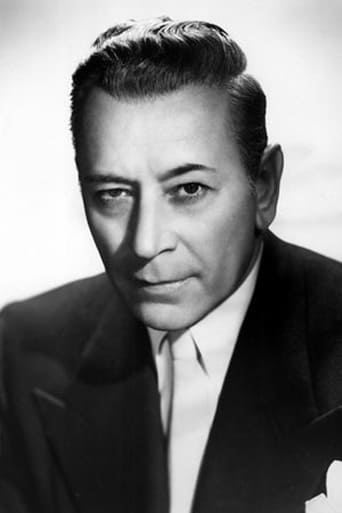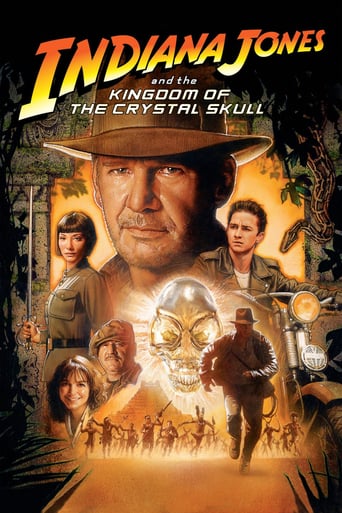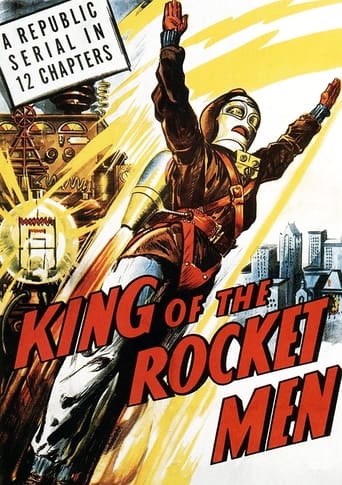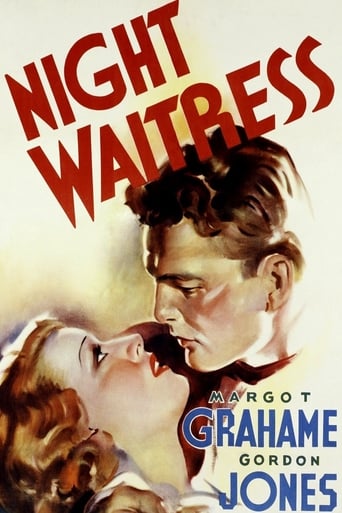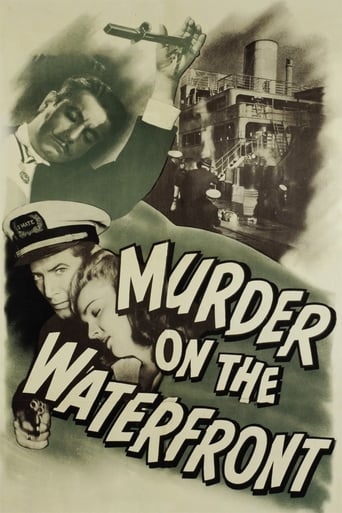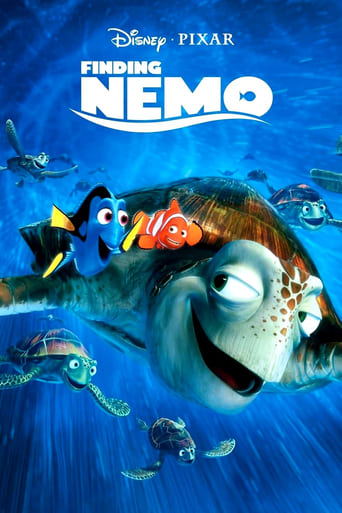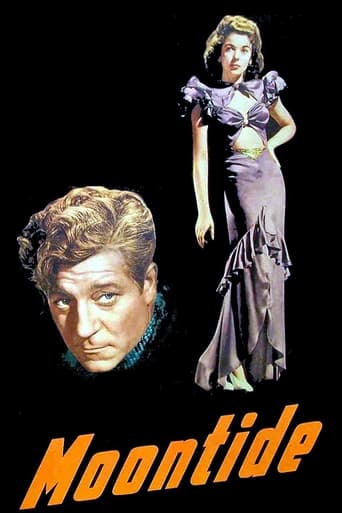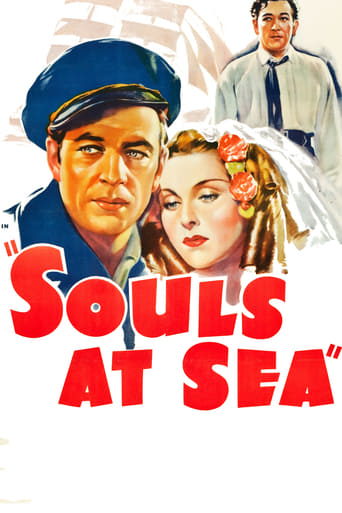
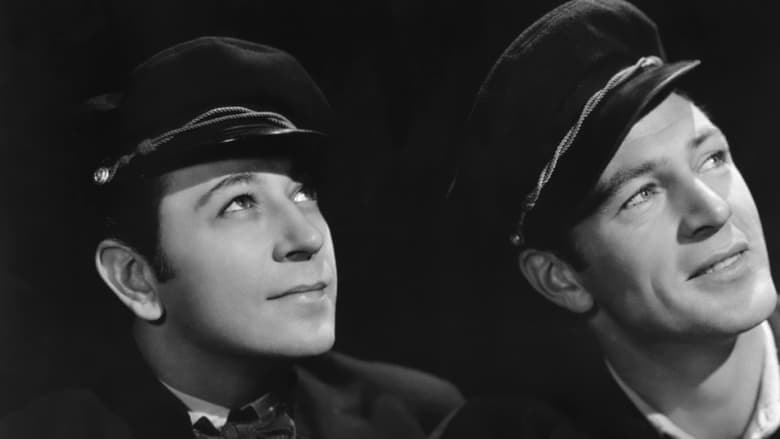
Souls at Sea (1937)
Michael 'Nuggin' Taylor and Powdah save lives during a sea tragedy in this story about the slave trade on the high seas during 1842.
Watch Trailer
Cast
Similar titles
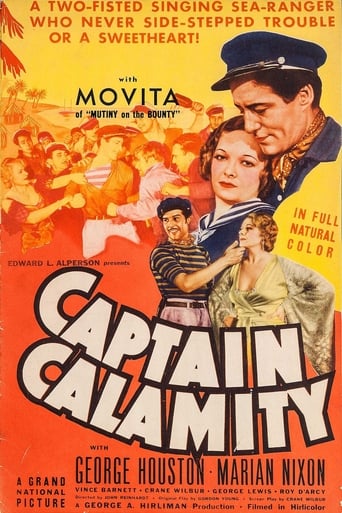
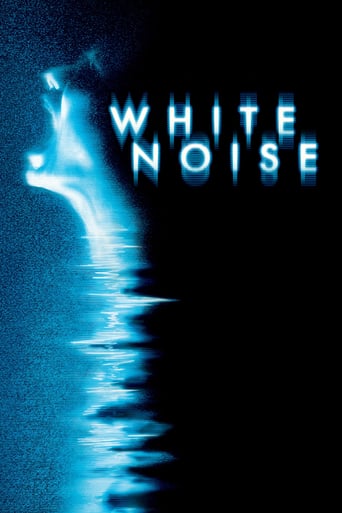
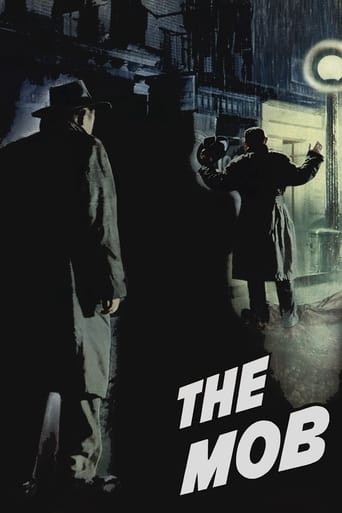
Reviews
Yawn. Poorly Filmed Snooze Fest.
Save your money for something good and enjoyable
Simple and well acted, it has tension enough to knot the stomach.
The acting is good, and the firecracker script has some excellent ideas.
I should begin by admitting a prejudice against sea-going tales. And, my interest in this film almost bit the dust because of that; I found the first 20 or so minutes of the film to be quite a bore.Then, however, the true nature of the tale began to become a bit more obvious, and my interest picked up. This is almost a spy story, albeit about a private effort to stop the lave trade.The cast here is interesting. The most interesting thing about Gary Cooper is that his speech pattern is not his usual. He does a nice job here. The role George Raft has here is totally different than just about anything you've seen him in before. Frances Dee is very good as the love interest and as the point of friction between her admirer (Cooper) and her brother (Henry Wilcoxon), a true slaver. I always thought that Wilcoxon was an actor who deserved better roles, and while he is the villain here, at least it's a good role. Harry Carey has a small role as a sea captain. Robert Cummings is here in his first movie role. Paul Fix has a tiny role as a violinist. Ward Bond and Alan Ladd have uncredited small roles.The shipwreck scenes are quite masterful (with a few glitches in special effects, but not bad for 1937).Highly recommended, just get past the first 20 minutes or so.
Produced by Paramount Pictures in 1937 SOULS AT SEA is one of the great seafaring stories of Hollywood's Golden Age! A fondly remembered movie by cultists it recently seems to be forgotten somewhat in the DVD age being available only - and for many years on a VHS tape. But it thankfully now has turned up on a region 2 disc in England in a really impressive issue. Splendidly directed by a young Henry Hathaway it was photographed in glorious black & white by Charles Lang Jr.With only one lifeboat left, and too many passengers to be accommodated when a great ship is sinking, it is up to the Captain to decide who is to live and who must surely die. Gary Cooper in one of his most memorable roles plays the part of the man left with this decision. Also in the cast is George Raft in one of the best roles he ever played! As Cooper's friend and buddy - and leaving his tough guy mobster parts behind him - his performance here is quite different and is altogether likable and appealing. His wooing also of the lovely and gentle Olympe Bradna is touching and engaging. Their well written scenes together are heartfelt and sincere! The sinking scenes of the great ship are really well done for its time and immediately brings to mind the spectacle of the sinking of another great ship we all know so well. Others in the well chosen cast are Henry Wilcoxon, Harry Carey, Porter Hall, Paul Fix and watch out for a young Robert Cummings.The female lead is taken by a now wholly forgotten actress Francis Dee. Dee was a popular star in the thirties, appearing in the best version of "Little Women" in 1933 she was also a contender for the plum role of Melanie in "Gone With The Wind". In 1937 (the same year as "Souls At Sea") she starred in the classic western "Wells Fargo" opposite western star Joel McCrea. She had been married to McCrea since 1933 and remained so until his death in 1990. After 57 years of marriage they would remain one of Hollywood's longest unions. Francis Dee died in 2004 at the age of 94! In "Souls At Sea" she plays the sister of slimy villain Henry Wilcoxon who is secretly running a fleet of slave ships and whom Cooper, under secret orders from the British Admiralty, is sworn to put out of business.An excellent film in an excellent DVD transfer that really looks spotless. Evidently they used a brand new print of the picture and it certainly shows. However, it is disappointing that there are no extras not even a trailer. But collectors of vintage classic movies will love it just the same.
Here is a film that inexplicably has been given little exposure to modern audiences. Paramount threw in a lot of its top talent to tell a good story with drama, humor and lots of action.Nuggin Taylor (Cooper) has waged a one-man war against slaves ships in the 1840s. His best friend Powdah (Raft) has been a slaver, if a half-hearted one, for years. The two board a packet from Liverpool to America in a plot to undermine the slave shipping lines, but also on board is their main nemesis and his sister. Naturally Taylor has a "thing" for the sister. When a tragic accident befalls the ship, Taylor must take drastic action to save passengers and is ultimately charged with multiple murders.Cooper again plays the aw-shucks persona he perfected but here combines it with the literate, committed character of Nuggin. Note that in the lengthy opening sequence he says nothing, but is the center point of every word. Raft, who was always at his best for Henry Hathaway, gets crimped hair and an earring and the package works for the uneducated, footloose Powdah, who is ironically terrified of water. Raft's trademark unblinking stare is used to great effect and even humor. Copper and Raft, who sing together so pleasantly here, remained good friends after making this film.The picture took three photographers. Estimable Charles Lang split the cinematography duties with Merritt Gerstad. Gordon Jennings was in charge of the special photographic effects in the climactic ship disaster. Their decisions were mostly excellent. Especially effective were the constant tilted angles aboard ship. The black-and-white filming offers up rich tones and texture, instantly setting the stage with the slave cargo sequence. The action scenes are outstandingly photographed and executed.In period pieces, Hollywood tends to go overboard with layers of decorations. In 'Souls at Sea' art directors Hans Dreier and Roland Anderson are magnificently restrained and very accurate. That and A.E. Freudeman's interior decoration make the film seem really in Philadelphia, really in Liverpool and really on board a ship in 1842.This is a great example of Hathaway's work, weaving appropriate humor into the human drama and relationships. There is an amusing montage as Taylor is scouring Liverpool for Powdah, and that relationship's integrity is maintained throughout.This is a classic well worth making the effort to find.
Our memories of historic calamity is selective - from legend the great flood of Noah (and Gilgamesh), from Rome the eruption of Vesuvius over Pompeii and Herculaneum, from the middle ages the bubonic plague, from the Reformation the St. Bartholemew Day's Massacre, the Great fire of London in 1666, all the way to the Chicago fire, the San Francisco Earthquake, the sinking of the Titanic, the Hindenburg, the Holacaust of World War II, and a handful of others. No films about the Lusitania, the Andrea Doria, the Teneriffe Airplane catastrophe (the worst aviation disaster), the Wilhelm Gustloff, the eruption of Mt. Pelee in Martinique in 1902 (there is a book THE DAY THE WORLD ENDED, which was made into a movie - but the setting was modernized), or the great influeza epidemic of 1918. Occasionally a film briefly deals with a disaster: MANHATTAN MELODRAMA with the the General Slocum fire, or THE SEVEN LITTLE FOYS with the Iroquois Theatre fire. It is rare for a film to pick up and plant a tragedy squarely into the conclusion of a film.In 1842 a ship, the "William Brown", hit an iceberg and sank. The survivors faced a problem similar to the Titanic - there was only one lifeboat, and too many people to save. The Captain (Harry Carey Sr. in this movie) was injured and command went to the first mate. The mate (here played by Gary Cooper) had one of the most agonizing decisions any seaman faces: "Who will live and who must we allow to die?" He went about the grim business with determination, and about a dozen survivors died. The remaining survivors owed their lives to his decision - because he was able to keep the one lifeboat afloat by not overloading it with survivors. However, he was tried for murder, and convicted of manslaughter. The film changes this in several ways. First, the bulk of the film dealt with the slave trade, slowly being made illegal by the British and U.S. governments in the late 1830s and 1840s, but still supported strongly in the American South. Much of the film deals with Cooper and his friend George Raft fighting the slave interests (represented by Henry Wilcoxon - for once away from his usual director Cecil B. DeMille). Secondly, the disaster that culminates the film is caused by a fire set by a little girl (Virginia Weidler - who is killed in the initial explosion). The disaster is well handled, and gives Raft one of his most poignant moments when he takes the body of his girlfriend (who was killed in the disaster) and places the body on her bed in her stateroom, and goes down with the ship to remain with her. The actual choices of death or life is given by Cooper - and done well. Finally, the court does not convict Cooper, who is freed by the eloquence of his lawyer (George Zucco, of all people!). It is a good movie, and reminds the audience of how powerful an economic group the slavers were. Many American fortunes in the shipping trade did use slave ships for profit on occasion. In the 17th, 18th, and early 19th Century it was not considered an obnoxious trade until about 1828. Before condemning Americans for being so hypocritical, remember England did not finally abolish slavery until 1833 (just before the death of William Wilberforce, the man who led the abolitionist movement there for decades). Russia did not abolish it's variation - serfdom - until 1861, four years before the U.S. abolished it with the 13th Amendment, and Brazil did not abolish it until 1889! I might add that in portions of North Africa, it is still countananced by certain governments (like the Sudan). The latter detail does not get much attention in the press, interestingly enough.Why was the "William Brown" tragedy "lucky enough" to get a film of it's own? Why no film about the loss of H.M.S. Royal George (which keeled over with the loss of 900 people at anchor in Spitshead in 1782), or the Andrea Doria (surely an interesting film about the great rescue of 1,600 people on board is worth consideration)? Neither appears on celuloid (although photos and movies of the actual Doria disaster exist). But why the "Brown"? The trial does give the film a good culmination point, but the sinking has nothing to do with slavery or the slave trade!By the way, the story of the "Brown" was repeated in a modern setting in 1957, when Tyrone Power starred in "ABANDON SHIP!". Basically the story is kept the same - overcrowded lifeboat under command of the first mate (Power) when the Captain dies (here the Captain was Lloyd Nolan). The only difference was that Stephen Boyd was the one survivor who tries to stop Power. Power survives, but is put on trial and found guilty of manslaughter. Since his decisions are put into central view, the entire movie deals with the emotional problems Power faces in literal life and death choices. It is a terrific film, and one of Power's three or four best dramatic performances. Footnote to Power and his sea movie - Tyrone Power was the third of four generations of Powers after an initial ancester, also known as Tyrone Power, who made a huge reputation as a leading stage actor of the 1820s and 1830s in England and the United States. His great-grandfather was sailing home, in March 1841, on the largest Atlantic liner of the day: the President. It was last seen in a hurricane swept sea off Nantucket shoals. Nothing further was ever discovered of it. Many Americans found it a sinister coincidence that that April, for the first time in our history, the U.S. President (William Henry Harrison) died in office of pneumonia. Perhaps Tyrone Power thought of his missing forbear when he made ABANDON SHIP, that re-telling of the William Brown tragedy.

